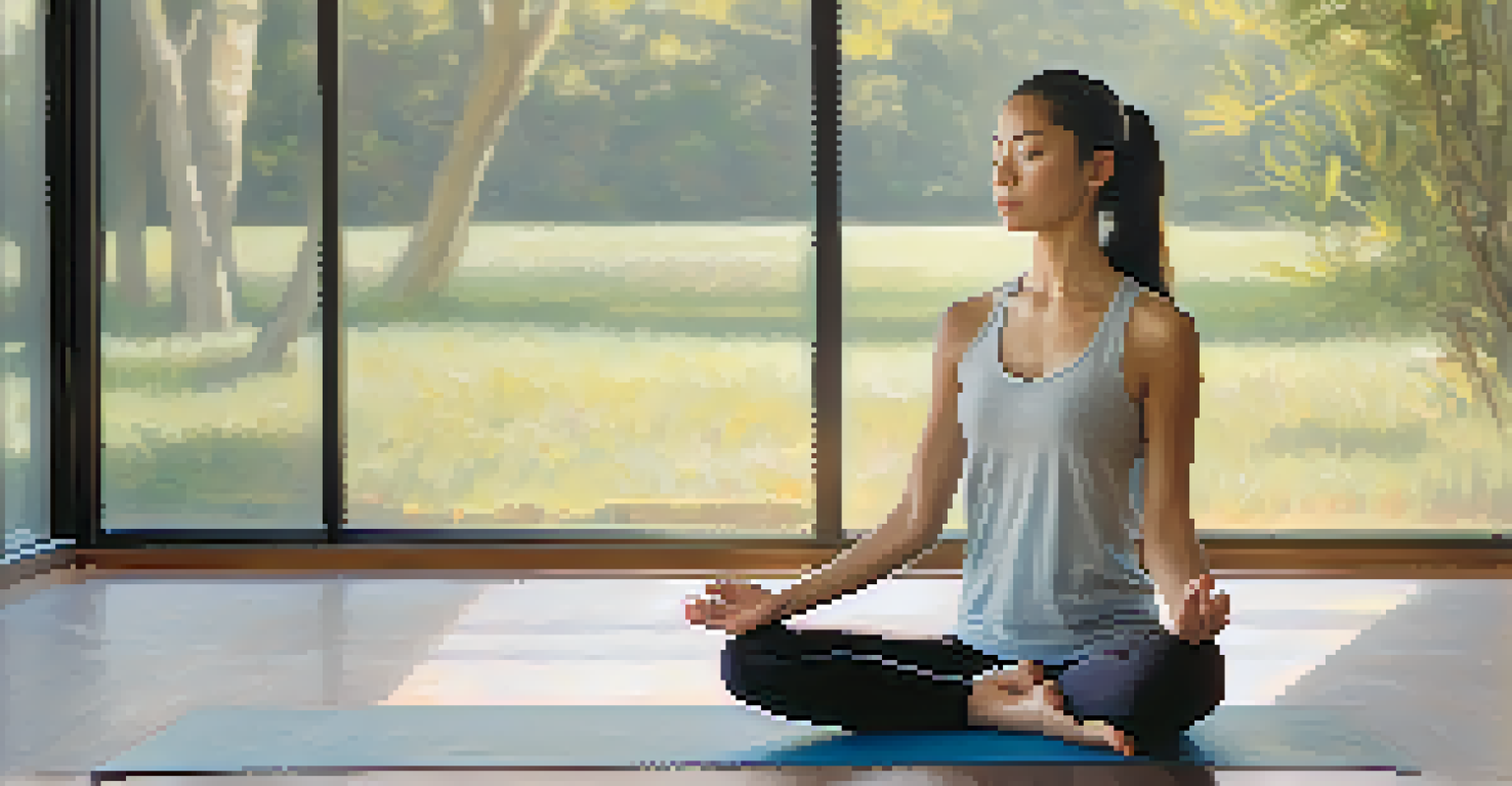Yoga Techniques for Managing Menopause Symptoms

Understanding Menopause and Its Symptoms
Menopause is a natural transition in a woman’s life, marking the end of her reproductive years. It often brings a host of symptoms such as hot flashes, mood swings, and sleep disturbances, which can be quite challenging to manage. Understanding these symptoms is the first step towards finding effective ways to cope with them.
Yoga is the journey of the self, through the self, to the self.
During menopause, hormonal changes can lead to physical and emotional discomfort. For instance, hot flashes can make daily activities uncomfortable, while mood swings can affect relationships and overall quality of life. Knowing what to expect can help women prepare and seek support where needed.
This is where yoga comes into play. It offers a holistic approach that not only addresses physical symptoms but also provides emotional and mental relief, helping women navigate this significant life change with grace and strength.
The Benefits of Yoga for Menopause Management
Yoga is a powerful tool for managing menopause symptoms due to its emphasis on mindfulness, breathing, and physical movement. Regular practice can enhance physical strength and flexibility, which are often compromised during menopause. Additionally, yoga promotes relaxation and stress relief, critical components in managing menopausal symptoms.

Research has shown that yoga can significantly reduce the frequency and intensity of hot flashes. Furthermore, it can improve sleep quality, which is often disrupted during this time. By engaging in yoga, women may find themselves better equipped to handle emotional fluctuations and stress.
Yoga Eases Menopause Symptoms
Regular yoga practice can significantly alleviate physical and emotional discomfort associated with menopause.
Beyond physical benefits, yoga fosters a sense of community and connection, which can be incredibly valuable during this transitional period. Joining a yoga class can introduce women to others experiencing similar challenges, creating a supportive environment for sharing and growth.
Breathing Techniques to Alleviate Hot Flashes
Breath control is a fundamental aspect of yoga that can be especially beneficial for managing hot flashes. Techniques such as diaphragmatic breathing help to calm the nervous system and can reduce the intensity of these sudden heat surges. Taking deep, intentional breaths can also provide a sense of grounding during moments of discomfort.
The mind is everything. What you think you become.
One effective breathing technique is the '4-7-8' method. Inhale through your nose for a count of four, hold for seven, and exhale slowly through your mouth for a count of eight. This practice can help you regain control during a hot flash and promote relaxation.
Incorporating these breathing techniques into your daily routine—perhaps during a lunch break or before bed—can empower you to tackle the unpredictability of menopause with confidence and ease.
Gentle Yoga Poses for Physical Relief
Gentle yoga poses can provide significant relief from physical discomfort associated with menopause. Poses like Child’s Pose and Cat-Cow stretch help release tension in the back and shoulders, areas that often carry stress. These positions promote flexibility and ease, making them ideal for women experiencing joint stiffness.
Another beneficial pose is the Legs-Up-the-Wall pose, which encourages relaxation and can alleviate swelling in the legs. This restorative position not only calms the mind but also aids in circulation, addressing some of the physical symptoms of menopause.
Breathing Techniques for Relief
Utilizing breathing methods like the '4-7-8' technique can help manage hot flashes and promote relaxation.
Integrating these gentle poses into a daily routine can help create a sense of physical comfort and emotional balance, making it easier to navigate the changes that come with menopause.
Mindfulness and Meditation for Emotional Balance
Mindfulness and meditation practices, often included in yoga, play a crucial role in managing emotional symptoms of menopause. These practices encourage women to focus on the present moment, helping to reduce anxiety and stress that can accompany hormonal changes. By fostering awareness and acceptance, mindfulness can make the emotional rollercoaster of menopause more manageable.
Meditation techniques such as guided imagery or loving-kindness meditation can enhance self-acceptance and promote a positive mindset, countering feelings of irritability or sadness. Taking just a few minutes each day to engage in meditation can lead to significant emotional benefits over time.
Incorporating mindfulness into daily life, whether through yoga or other activities, can empower women to respond to emotional challenges with greater resilience and understanding.
Creating a Supportive Yoga Community
Finding a supportive community can make a world of difference during menopause. Joining a yoga class specifically designed for women experiencing menopause can provide not only physical benefits but also emotional support. Sharing experiences with others can foster a sense of connection and reduce feelings of isolation.
Many studios offer classes tailored to the unique needs of menopausal women, focusing on poses and techniques that alleviate symptoms. Engaging with like-minded individuals can lead to friendships and mutual encouragement, enhancing the overall experience of navigating menopause.
Join a Supportive Yoga Community
Participating in menopause-focused yoga classes fosters connection and emotional support among women facing similar challenges.
Consider exploring local classes or online communities where women share tips, challenges, and successes related to yoga and menopause. This shared journey can be incredibly uplifting and empowering.
Establishing a Consistent Yoga Practice
Establishing a consistent yoga practice is key to reaping the benefits of yoga for menopause management. Setting aside a specific time each day, even if it’s just 15-20 minutes, can help create a routine that supports both physical and emotional well-being. Consistency is essential in building strength, flexibility, and resilience.
To make this easier, consider integrating yoga into your daily life. You might start your day with a few gentle stretches or wind down in the evening with a calming sequence. Finding a practice that feels enjoyable and accessible is vital for maintaining long-term engagement.

Remember that yoga is not about perfection; it’s about progress and self-care. As you cultivate this practice, you’ll likely notice improvements in your ability to manage menopause symptoms and enhance your overall quality of life.